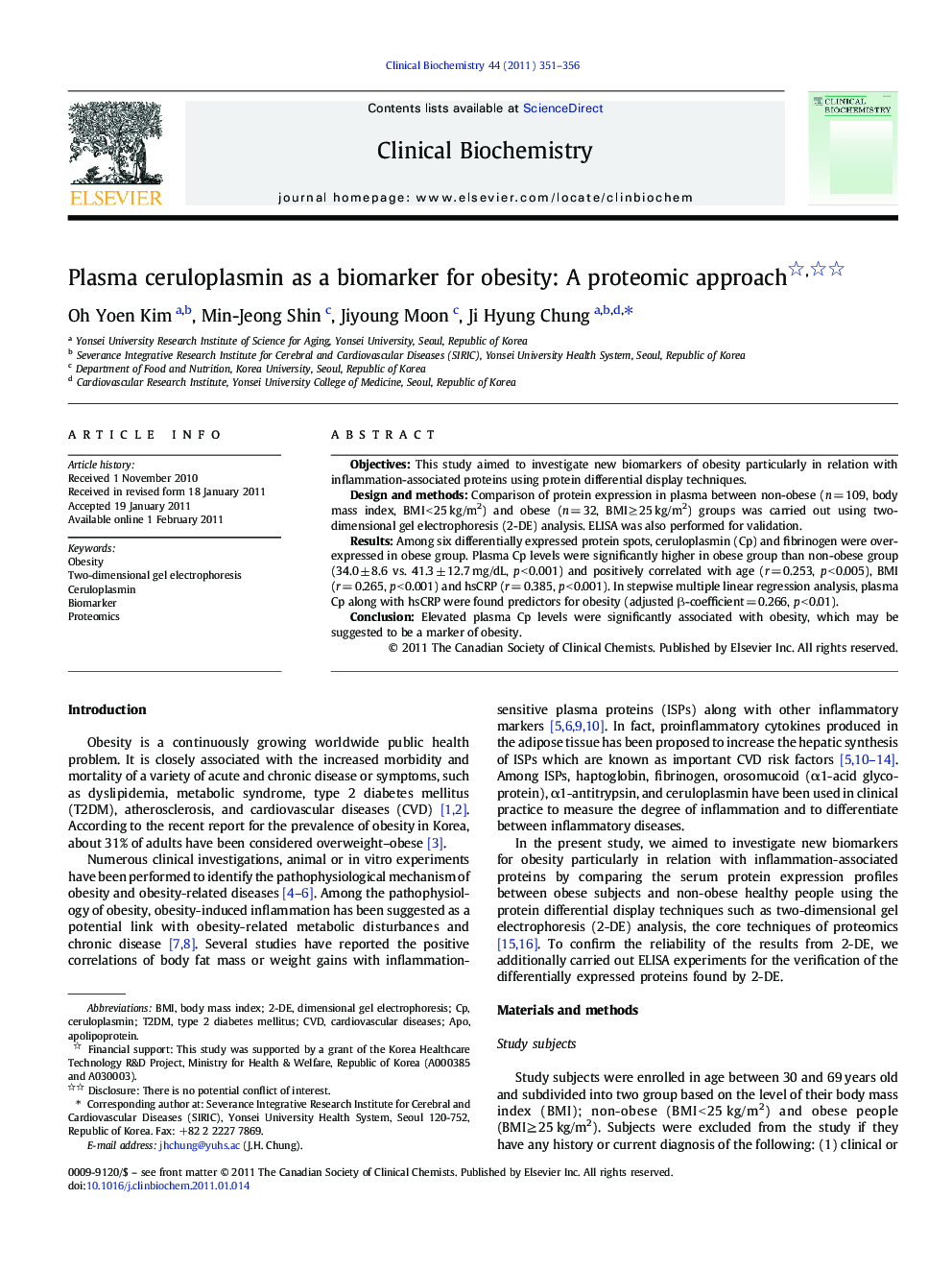| Article ID | Journal | Published Year | Pages | File Type |
|---|---|---|---|---|
| 1969490 | Clinical Biochemistry | 2011 | 6 Pages |
ObjectivesThis study aimed to investigate new biomarkers of obesity particularly in relation with inflammation-associated proteins using protein differential display techniques.Design and methodsComparison of protein expression in plasma between non-obese (n = 109, body mass index, BMI < 25 kg/m2) and obese (n = 32, BMI ≥ 25 kg/m2) groups was carried out using two-dimensional gel electrophoresis (2-DE) analysis. ELISA was also performed for validation.ResultsAmong six differentially expressed protein spots, ceruloplasmin (Cp) and fibrinogen were over-expressed in obese group. Plasma Cp levels were significantly higher in obese group than non-obese group (34.0 ± 8.6 vs. 41.3 ± 12.7 mg/dL, p < 0.001) and positively correlated with age (r = 0.253, p < 0.005), BMI (r = 0.265, p < 0.001) and hsCRP (r = 0.385, p < 0.001). In stepwise multiple linear regression analysis, plasma Cp along with hsCRP were found predictors for obesity (adjusted β-coefficient = 0.266, p < 0.01).ConclusionElevated plasma Cp levels were significantly associated with obesity, which may be suggested to be a marker of obesity.
